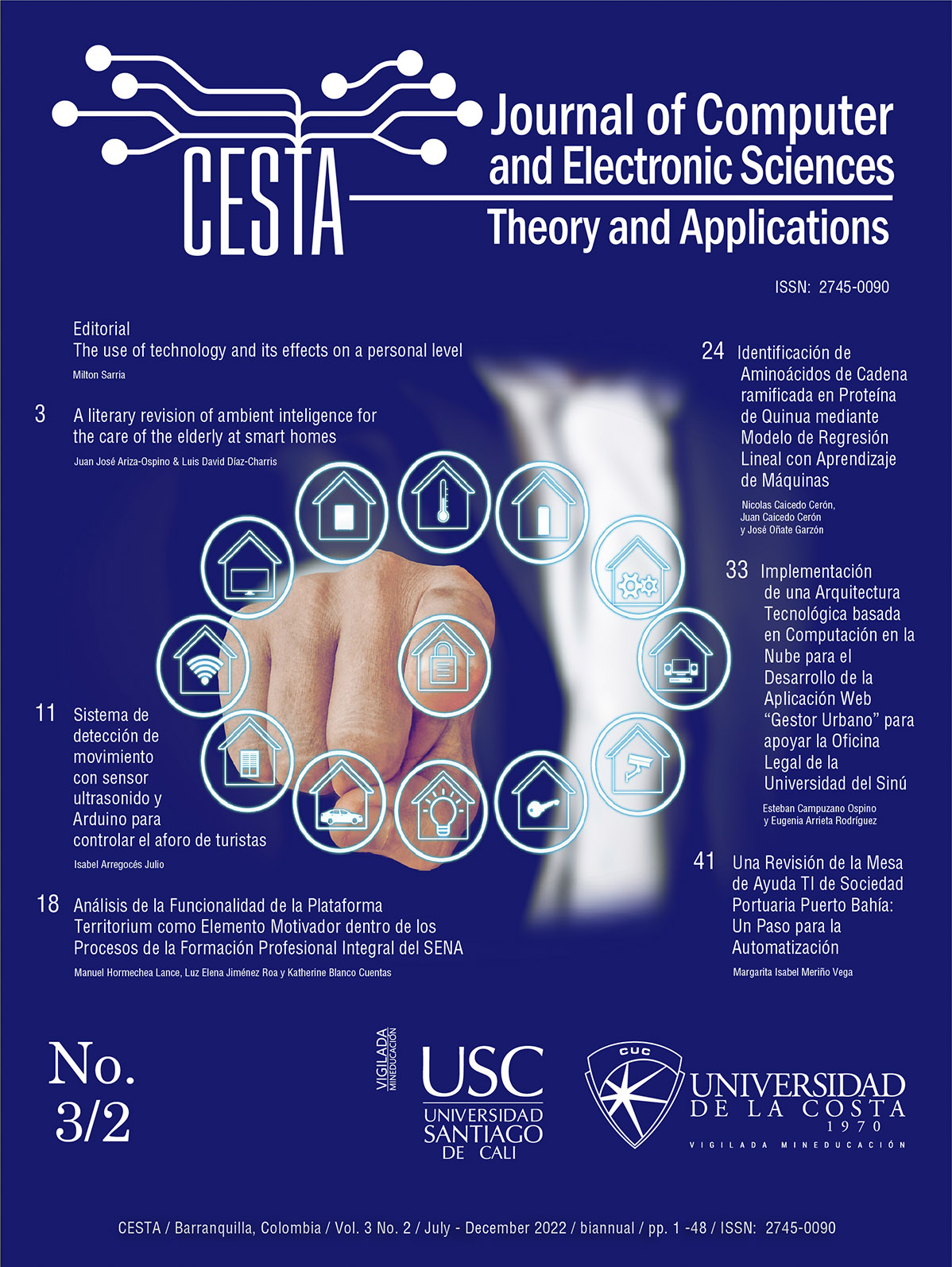Identification of branched-chain amino acids in quinoa using linear regression modelling with machine learning.
DOI:
https://doi.org/10.17981/cesta.03.02.2022.04Abstract
Quinoa is classified as a pseudocereal and contains bioactive components, such as proteins with high nutritional value. The consumption of protein and especially branched-chain essential amino acids plays a fundamental role in the diet, since it favors the maintenance of body structures. The present article seeks to perform an analysis and quantification of amino acids in quinoa protein using the United States Department of Agriculture (USDA) database. Python programming language was used to develop machine learning (ML) models to predict the presence of branched amino acids in quinoa protein and through linear regression to obtain statistical data that provide an approximate amount of these nutrients. Important articles can be found where information on machine learning techniques to obtain nutritional information is presented. The amino acids valine, leucine and isoleucine were identified in isolated quinoa protein and, in turn, chickpea, rice, broccoli, raw quinoa and cooked quinoa were used as controls, and the w/w concentration values obtained in g/100g were 15.9, 3.43, 1.7, 0.37, 2.1 and 0.66, respectively. These results show the presence of branched-chain amino acids in quinoa, confirming the importance of its nutritional value and its possible effects on muscle health.
Downloads
Published
How to Cite
Issue
Section
License
Copyright (c) 2022 Nicolas Caicedo

This work is licensed under a Creative Commons Attribution-NonCommercial-NoDerivatives 4.0 International License.
Los artículos publicados son de exclusiva responsabilidad de sus autores y no reflejan necesariamente las opiniones del comité editorial.
La Revista CESTA respeta los derechos morales de sus autores, los cuales ceden al comité editorial los derechos patrimoniales del material publicado. A su vez, los autores informan que el presente trabajo es inédito y no ha sido publicado anteriormente.
Todos los artículos están bajo una Licencia Creative Commons Atribución-NoComercial-SinDerivadas 4.0 Internacional.



 English
English
 Español (España)
Español (España)






